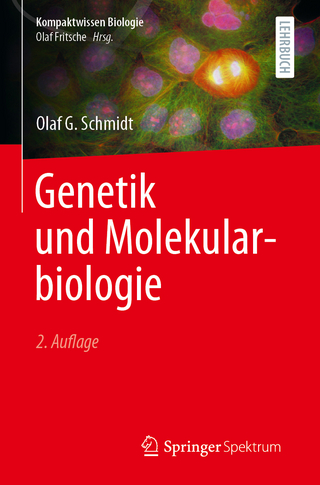
Silencing, Heterochromatin and DNA Double Strand Break Repair
Seiten
2012
|
Softcover reprint of the original 1st ed. 2001
Springer-Verlag New York Inc.
978-1-4613-6960-8 (ISBN)
Springer-Verlag New York Inc.
978-1-4613-6960-8 (ISBN)
The field of DNA repair is vast and advancing rapidly. Although I have no doubt that many breakthroughs in our understanding of chromatin, chromatin regulation, and DNA repair lie in our future, presently this is a new line in inquiry.
The field of DNA repair is vast and advancing rapidly. Recent investigations have begun to focus on the involvement of chromatin in the repair of broken DNA. Although I have no doubt that many breakthroughs in our understanding of chromatin, chromatin regulation, and DNA repair lie in our future, presently this is a new line in inquiry. As such there are many, many unanswered questions. Indeed, most of the correct questions have probably not even been asked yet. Here I have attempted to present a review of some of the current body of knowledge that may prove relevant to understanding the role of chromatin in DNA repair. Because the volume of research, and the relevant findings, come from a staggering array of labs, systems, and ideas I have focused primarily on findings developed from the study of the budding yeast Saccharomyces cerevisiae. Unfortunately, this means that I have left out a great deal of information. It is my hope, however, that the information I do detail, particularly in Chapter 1, will give a flavor for the scope of the problem and perhaps highlight some of the interesting directions this field is taking, or may one day take. I would also point out that the primary research that is presented herein is not in any way meant to represent the comprehensive scope of research being performed. To understand DNA repair will require investigation from innumerable labs, performed by innumerable researchers, moving in unexpected directions.
The field of DNA repair is vast and advancing rapidly. Recent investigations have begun to focus on the involvement of chromatin in the repair of broken DNA. Although I have no doubt that many breakthroughs in our understanding of chromatin, chromatin regulation, and DNA repair lie in our future, presently this is a new line in inquiry. As such there are many, many unanswered questions. Indeed, most of the correct questions have probably not even been asked yet. Here I have attempted to present a review of some of the current body of knowledge that may prove relevant to understanding the role of chromatin in DNA repair. Because the volume of research, and the relevant findings, come from a staggering array of labs, systems, and ideas I have focused primarily on findings developed from the study of the budding yeast Saccharomyces cerevisiae. Unfortunately, this means that I have left out a great deal of information. It is my hope, however, that the information I do detail, particularly in Chapter 1, will give a flavor for the scope of the problem and perhaps highlight some of the interesting directions this field is taking, or may one day take. I would also point out that the primary research that is presented herein is not in any way meant to represent the comprehensive scope of research being performed. To understand DNA repair will require investigation from innumerable labs, performed by innumerable researchers, moving in unexpected directions.
1 Introduction to silencing, heterochromatin, and DNA break repair.- Yeast Silencing.- DNA Damage Repair.- Recent Findings.- 2 Identification and characterization of high-copy antagonists of silencing in Saccharomyces cerevisiae.- Results.- Discussion.- 3 MEC1-dependent redistribution of the Sir3 silencing protein from telomeres to DNA double strand breaks.- Summary.- Results.- Discussion.- 4 The antisilencing gene ASF1 is required for resistance to DNA damage.- Results.- Discussion.- 5 Summary and Conclusions.- Summary.- DNA repair.- Role of SIR complex.- Role of ASF1.- Model for heterochromatin response.- Implications and questions.- Appendix A: Procedures.- Appendix B: Yeast strains.- Appendix C: Oligonucleotides.- References.
| Zusatzinfo | XI, 122 p. |
|---|---|
| Verlagsort | New York, NY |
| Sprache | englisch |
| Maße | 155 x 235 mm |
| Themenwelt | Medizin / Pharmazie ► Medizinische Fachgebiete ► Onkologie |
| Studium ► 2. Studienabschnitt (Klinik) ► Humangenetik | |
| Naturwissenschaften ► Biologie ► Biochemie | |
| Naturwissenschaften ► Biologie ► Genetik / Molekularbiologie | |
| Naturwissenschaften ► Biologie ► Zoologie | |
| Naturwissenschaften ► Physik / Astronomie ► Angewandte Physik | |
| ISBN-10 | 1-4613-6960-6 / 1461369606 |
| ISBN-13 | 978-1-4613-6960-8 / 9781461369608 |
| Zustand | Neuware |
| Haben Sie eine Frage zum Produkt? |
Mehr entdecken
aus dem Bereich
aus dem Bereich
Eine sehr persönliche Geschichte | Der New York Times-Bestseller
Buch | Softcover (2023)
Ullstein Taschenbuch Verlag
21,99 €
Die revolutionäre Medizin von morgen (Lifespan)
Buch | Softcover (2020)
DuMont Buchverlag
16,00 €


